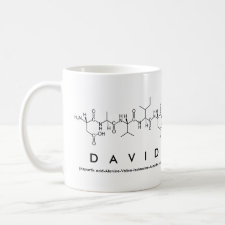
Authors: Bodoki AE, Iacob BC, Gliga LE, Oprean SL, Spivak DA, Gariano NA, Bodoki E
Article Title: Improved Enantioselectivity for Atenolol Employing Pivot Based Molecular Imprinting.
Publication date: 2018
Journal: Molecules
Volume: 23
Issue: (8)
Page numbers: ArticleNo1875.
DOI: 10.3390/molecules23081875
Alternative URL: http://www.mdpi.com/1420-3049/23/8/1875
Abstract: In the last few decades, molecular imprinting technology went through a spectacular evolution becoming a well-established tool for the synthesis of highly selective biomimetic molecular recognition platforms. Nevertheless, there is still room for advancement in the molecular imprinting of highly polar chiral compounds. The aim of the present work was to investigate the favorable kosmotropic effect of a ternary complex involving a polar chiral template (eutomer of atenolol) and a functional monomer, bridged by a central metal ion through well-defined, spatially directional coordinate bonds. The efficiency of the chiral molecular recognition was systematically assessed on polymers obtained both by non-covalent and metal-mediated molecular imprinting. The influence on the chromatographic retention and enantioselectivity of different experimental variables (functional monomers, cross-linkers, chaotropic agents, metal ions, porogenic systems, etc.) were studied on both slurry packed and monolithic HPLC columns. Deliberate changes in the imprinting and rebinding (chromatographic) processes, along with additional thermodynamic studies shed light on the particularities of the molecular recognition mechanism. The best performing polymer in terms of enantioselectivity (α = 1.60) was achieved using 4-vinyl pyridine as functional monomer and secondary ligand for the Co(II)-mediated imprinting of S-atenolol in the presence of EDMA as cross-linker in a porogenic mixture of [BMIM][BF4]:DMF:DMSO = 10:1:5, v/v/v
Template and target information: atenolol
Author keywords: metal-mediated molecular imprinting, hydrophilic template, atenolol, chiral separation, β-Blockers, Molecularly imprinted polymers, molecular recognition



Join the Society for Molecular Imprinting

New items RSS feed
Sign-up for e-mail updates:
Choose between receiving an occasional newsletter or more frequent e-mail alerts.
Click here to go to the sign-up page.
Is your name elemental or peptidic? Enter your name and find out by clicking either of the buttons below!
Other products you may like:
 MIPdatabase
MIPdatabase









